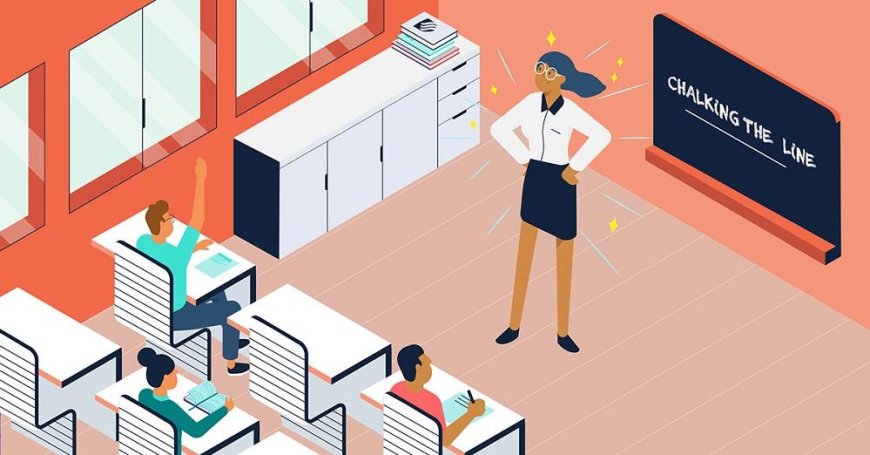How to teach students to be grateful and appreciate what they have
desire for more, but also the ability to always appreciate what he has and sincere gratitude for it. How to teach students to be grateful.

Everyone dreams of being happy. And the basic educational goal of parents and teachers is to teach the child to feel that way, even without reference to external circumstances. And how to achieve this? First of all, it is necessary to instill in the child not only the desire for more, but also the ability to always appreciate what he has and sincere gratitude for it. How to teach students to be grateful.
However, it should be remembered that children due to psychological development tend to take everything for granted. The ability to feel gratitude is evidence of a successful process of maturation of the individual and the onset of its maturity, but it does not always depend on biological age. Not even all adults have this skill. However, you can learn this and teach your students!
Here are some effective tips to help instill in every child the ability to appreciate and rejoice in what they have, and to express their sincere gratitude.
Create a Gratitude Diary with student
During the educational hour, invite children to create and design their own personal bright diary, where they can write down the happy moments that happened in their lives. Note that not only important events are important, but also everyday trifles, of which, in the end, everyone's life consists.
Draw students' attention to the fact that happy moments for each of them are the result of someone's actions and aspirations - without the efforts of these people there would be no corresponding happy moments!
Practice the "Three Best Events of the Day" exercise
Invite students to make it a rule to do a very simple but effective exercise on a daily basis: when going to bed, identify for yourself the 3 best events that happened to each of them during the day or the good deeds that they did.
Practicing this exercise will develop the skill to appreciate happy moments and notice the phenomena that evoke feelings of gratitude.
Be an example of a grateful person
Children tend to imitate what they see, so be an example to your students - more often say words of gratitude to students.
The student watered the flower in class, washed the chalkboards, did your homework - be sure to sincerely thank you for your help! Words of gratitude, said simply and sincerely, will be an emotional reward, and the child will be happy to take the initiative to help in the future.
During class, initiate a class discussion, for which everyone can be grateful to fate. Explain to the children that everyone always wants more, but it is important to remember what he has in life, to whom he owes it, and what his fate might have been if he did not have what he really has now.
Must Read: Telenor Pakistan signs MOU with Sehat Kahani to Offer Digital Healthcare Solutions
Be sure to tell your students from time to time what you are grateful for (for example, they represented the class well in the school competition, improved their performance, stopped being late for class, and so on). After all, sincere words of gratitude will surely inspire students to new accomplishments and teach in a relaxed way that gratitude is a feeling worthy of imitation.
Practice the exercise "What are the benefits of this unpleasant situation"
Explain to students that things don't always happen the way they want or planned. However, do not be upset. Any events in the life of each of us do not happen just like that. Therefore, the task of any person is to learn to find something positive even in the worst and to be grateful for this lesson of life.
It will teach students to consider any situation from different angles (conflict, bad grades, parental restraint, etc.) and ask, first of all, the question: "What is good for me in the circumstances?", "What can I do? to learn thanks to this situation? and others.
Finding the best in the worst and accepting everything with gratitude is a good skill that will be useful to everyone!
Write a letter of thanks to your loved one with the children
Explain to the children that sincere gratitude is a reward for everyone's efforts. Unfortunately, not everyone pays due attention to this and often does not know how to show gratitude, so often there are various misunderstandings between people. To avoid such situations, it is important to learn to express your feelings correctly.
During class, discuss with students what they are very grateful for. Invite everyone to write a letter expressing gratitude to a loved one (eg, parents, friend, grandmother, teacher). Draw children's attention to the fact that gratitude can be not only for certain material things. But also for attention, support, time spent, effort, help, and so on. If desired, you can discuss the content of the letters and be sure to give them to the recipients.
Help others together
Make it a rule in class that once a month on a certain day you do something useful for others together. Clean the schoolyard, help younger students, collect things for charities, volunteer, and more. This will help students understand the importance of not only receiving but also giving. And this is, above all, an important component of gratitude.
In addition, by helping others, students will learn to show compassion and care. Also, caring for others will help instill in children the ability to appreciate the good they have - something they may take for granted.
